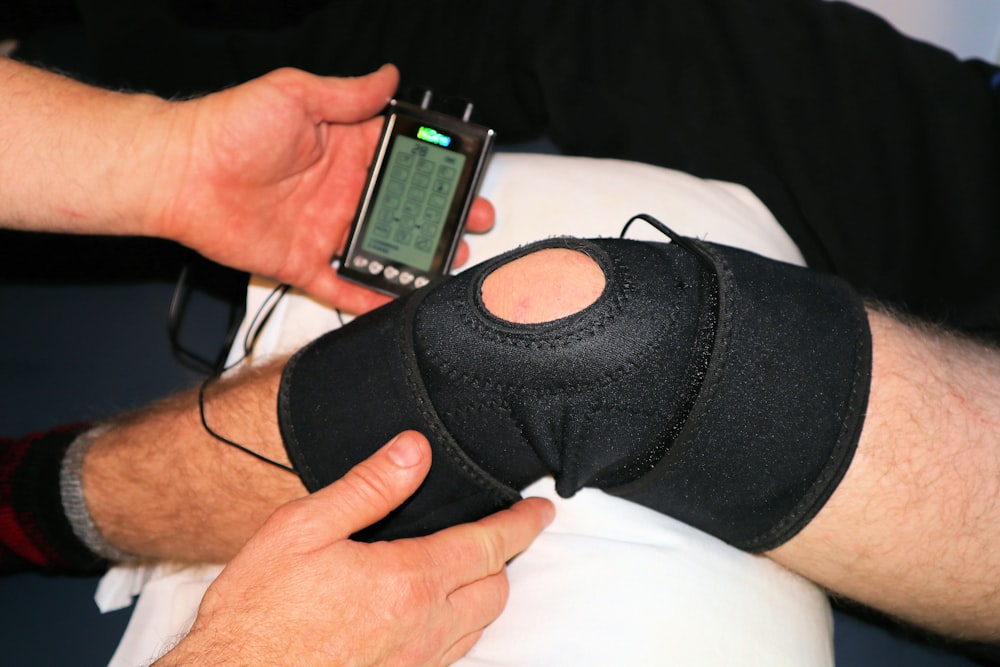目次
大腿骨近位部骨折例における膝痛ってよく経験しますよね
理学療法士・作業療法士が大腿骨近位部骨折例を担当した際によく経験するのが膝関節の疼痛です.
股関節周囲の疼痛は落ち着いてきたにもかかわらず膝関節痛の遷延によってリハビリテーションの進行に難渋するケースを経験することは多いと思います.
今回は大腿骨近位部骨折例における膝痛について調査した研究論文をご紹介させていただきます.

今回ご紹介する論文
Geriatr Gerontol Int. 2021 Aug 3. doi: 10.1111/ggi.14255. Online ahead of print.
Inpatient knee pain after hip fracture surgery affects gait speed in older adults: A retrospective chart-referenced study
Yoichi Kaizu 1 2, Kazuhiro Miyata 3, Hironori Arii 4, Takehiko Yamaji 2
Affiliations expand
PMID: 34342386 DOI: 10.1111/ggi.14255
今回ご紹介する論文は2021年に掲載された論文です.
研究の目的
Aim: Post-hip fracture knee pain (PHFKP) develops in 28-37.4% of patients with hip fracture and contributes to prolonged hospitalization. Although reduced balance and gait speed contribute to falls, the effects of PHFKP remain unclear. This study aimed to clarify whether PHFKP is a factor in balance and gait speed.
大腿骨近位部骨折後の膝関節痛は,大腿骨近位部骨折例の28~37.4%に発症し,入院期間の長期化の原因となります.
膝関節痛はバランス感覚や歩行速度の低下が転倒の原因となるが,その影響については不明であります.
この研究では膝関節痛がバランスや歩行速度に影響を与えるかどうかを明らかにすることを目的としております.
研究の方法
Methods: We retrospectively reviewed the medical records of patients after hip fracture. Development of PHFKP, basic information, and physical function were examined. Berg balance scale (BBS) and maximum walking speed (MWS) were collected at discharge. These parameters were compared with the presence or absence of PHFKP. In addition, multiple analyses were conducted with BBS and MWS as dependent variables and PHFKP as one of the independent variables.
大腿骨近位部骨折後の症例の医療記録を後方視的に調査しております.
膝関節痛,基本情報,身体機能を調査しております.
退院時にBergバランススケール(BBS)と最大歩行速度(MWS)を測定しております.
これらのパラメータを膝関節痛の有無で比較しております.
さらにBBSと最大歩行速度を従属変数として,膝関節痛を独立変数の1つとした多変重解析を行っております.
研究の結果
Results: Of the 146 patients enrolled, 43 (29.5%) developed PHFKP, and 37.2% of patients with PHFKP showed residual symptoms at discharge. Intensity of PHFKP was mostly mild to moderate. The PHFKP group showed an extended length of stay (+13.3 days) and a tendency toward more discharges to facilities compared with the control group. Knee extension range of motion limitation, knee extensor strength, and BBS did not differ between groups, while MWS was significantly lower in the PHFKP group (0.85 ± 0.32 m/s vs. 1.07 ± 0.39 m/s). Multiple analyses showed that development of PHFKP was not associated with BBS, but was associated with decreased MWS (standardized beta = -0.202, P = 0.005).
登録された146例の,43例(29.5%)が膝関節痛を発症し,膝関節痛を発症した症例の37.2%が退院時に症状が残存しておりました.
膝関節痛の強さはほとんどが軽度から中等度でありました.
膝関節痛群は,対照群に比べて入院期間が長く(+13.3日),施設への退院が多い傾向にありました.
膝伸展可動域制限,膝伸展筋力,BBSは群間で差がありませんでしたが,最大歩行速度は膝関節痛群で有意に低い結果でありました(0.85±0.32m/s vs. 1.07±0.39m/s).
多変重解析の結果,膝関節痛の発症はBBSとは関連しておりませんが,最大歩行速度の低下と関連しておりました(標準化ベータ値=-0.202,P=0.005).
研究の結論
Conclusions: PHFKP was identified as an independent factor in gait speed decline. PHFKP patients should be monitored for reduced gait speed during rehabilitation.
膝関節痛は,大腿骨近位部骨折例の歩行速度低下の独立した要因として同定されました.
膝関節痛を有する症例については歩行速度の低下を確認する必要があります.
今回は大腿骨近位部骨折例における膝痛について調査した研究論文をご紹介させていただきました.
当然といえば当然の結果ですね.
理学療法士・作業療法士としてはどういった症例が膝関節痛を発症しやすいのかが気になりますね.






